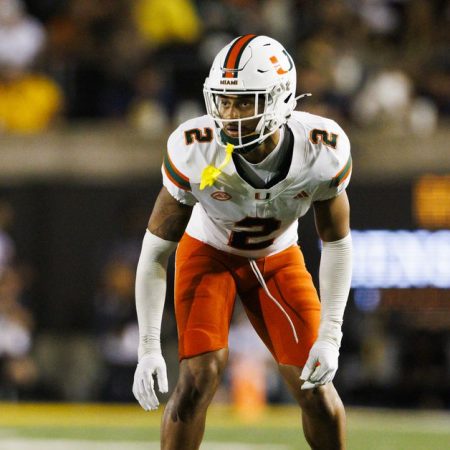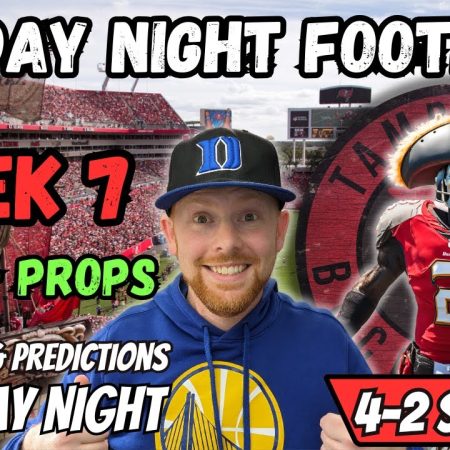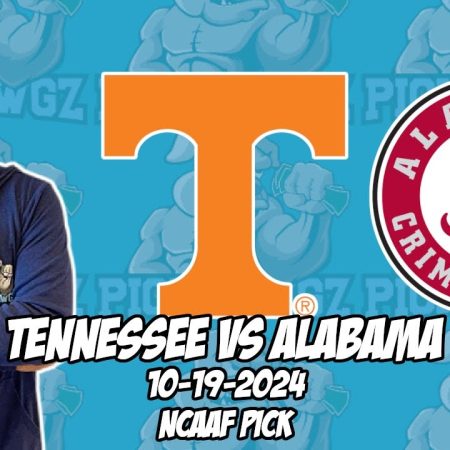Tell me if you’ve heard this one before: Running back Kaleb Johnson is a great zone runner, a perfect fit for Arthur Smith’s scheme, etc., etc.
It’s the new “Russell Wilson is in pole position for the starting quarterback job” for 2025.
Like the Wilson bit, that common Kaleb Johnson phrase is both true and something that could drastically change the Steelers offense in 2025. But oftentimes, the statement is left that simple, without explaining what exactly Smith’s outside zone scheme does, or why Johnson is a perfect fit.
So, let’s dive into what the Steelers' run game could look like this season.
Zone vs. gap running scheme 101
Everyone talks about Arthur Smith’s zone-based running game, but what exactly is a zone run? And what separates it from a gap run?
One of the easiest ways to tell the difference is how the offensive line moves directly after the snap.
Is the run to the left side, and several blockers are moving right?
That’s called down blocking, and the offense is trying to create a running lane, a literal gap to run through. Gap runs generally involve pulling linemen to create a numbers advantage where the team wants to run the ball.
Is the run to the left side, and the entire offensive line is flowing left?
They’re getting horizontal displacement for a zone run. In a “zone” running scheme, each lineman has an area of space they’re responsible for. If they’re covered (have a defensive lineman lined up in front of them) on the play, they’ll block that player. If not, they’ll help with a nearby double team and then climb to the second level of the defense to block a linebacker.
Here’s an example of a Steelers zone run:
Outside zone
Now that we have a basic understanding of gap vs. zone, let’s examine the concept of zone runs with a little more nuance.
Digging deeper into zone runs, you can split them into two main categories: inside zone and outside zone. While there are several layers of complexity to any given play design, for the focus of this article, we’re trying to understand the basics.
Inside/mid zone begins as a run between the tackles, generally on either side of the play-side guard. Conversely, outside/wide zone aims at or outside the play-side tackle — think the “stretch” play if you’ve ever played Madden.
While Arthur Smith is known for running outside zone, the Steelers were mainly an inside zone team last year. By Smith’s own admission, that’s because Pittsburgh just didn’t have the personnel to succeed at outside zone — the Steelers ran it 131 times last year, compared to the 202 times the Smith-led Atlanta Falcons did in 2023.
Pittsburgh did not have a great offense for much of last year, and inside zone is a less risky play. Running up the middle doesn’t result in as many big plays, but there’s also a smaller chance of losing major yardage. The shortest distance between two points is a straight line, and the simplest route upfield is through an inside run.
The blocking fundamentals from inside to outside zone are a bit different, too.
Inside zone needs to create more immediate displacement downfield. As a result, the O-line “drive” blocks. The first steps are more vertical. Blockers still have zones and double-team/climb if they’re uncovered, but don’t let zone’s reputation as a “finesse” scheme fool you. It can be a physical, smash-mouth play.
(Yes, this is a UFL example but it rules.)
With outside zone, the goal is to move the line of scrimmage laterally. The O-line will be taking a more horizontal first step to beat the defense. “Drive” blocks become “reach” blocks as offensive linemen aim for the outside shoulder of defenders rather than just pushing them straight back.
But wait, you say, in that “outside” zone play, the running back wasn’t running outside at all!
That’s the beauty of a zone run scheme. Rather than committing to one gap before the snap, running backs have the ability to freelance and find the right hole to run through during the play. In the clip above, the defense flows heavily towards the play-side, allowing the ball-carrier to find the cutback lane instead of following the outside track of the run.
This outside zone read is often called “bang, bounce, or bend.” Runners look at the outside defensive lineman on the play-side. If that defender contains the corner, the ball-carrier “bangs” inside. If that defender is blocked inside, then the ball-carrier “bounces” outside. And if multiple defenders hold the corner, then the ball-carrier can “bend” the run to the cutback lane, like in the play above.
Kaleb Johnson
Zone schemes, because they don’t have a set gap, require a level of vision from the running back to succeed.
That’s where 2025 third-round pick Kaleb Johnson comes in.
This won’t be a full breakdown of the former Iowa running back, but there is a reason why draft analysts kept using the word “smooth” to describe Johnson’s playing style in the Hawkeyes’ zone-heavy scheme.
Johnson doesn’t possess elite quickness or agility, but he makes choosing his running lane look effortless, easily reading the defense and efficiently taking advantage of what’s available.
a Kaleb Johnson long run on a well blocked outside zone by Iowa. A great look at how it can pop if the defense doesn't hit their gaps correctly. pic.twitter.com/E5c6S1zgtI
— Nate Tice (@Nate_Tice) March 3, 2025
An experienced outside zone runner, Johnson knows how to succeed behind the Steelers’ blocking concepts. And while he’s not a true home-run hitter, Johnson has enough juice to be a starter in the NFL, and he’s still capable of creating explosive gains when given a runway.
Johnson had the same struggles that Najee Harris did in the Steelers scheme last year when he was immediately met behind the line of scrimmage. But Johnson is also an outside zone specialist while Harris was always at his best in a more straightforward, plow-ahead gap scheme. Johnson is a more efficient mover who sees the field (and gets to running lanes) faster than Harris did.
Don’t expect Johnson to be juking defenders out of their shoes and making something out of nothing on busted runs, but do expect him to find more success reading cutback lanes and knifing through the defense when the offensive line holds its own with the initial zone blocks.
The offensive line matters too…
Now that you understand how zone runs work, it’s worth asking, why zone?
I liked this explanation so much from a 2021 Mile High Report article on a similar subject that I’ll just quote it below:
[B]y definition, zone blocking accounts for the unknown by design. Coaches don’t need as much time to go over different looks and how it blocks out. It doesn’t matter whether a defender ends up where he started pre-snap because the offensive lineman is responsible for an area and whoever winds up there. This makes zone runs a “safe” response to stunts from a playcalling perspective.
One other reason I believe zone blocking is so prevalent is that it isn’t as difficult to build and maintain from a roster building perspective. Linemen aren’t asked to pull, but to simply climb. Individual blockers aren’t expected to create a ton of movement at the point of attack, but rather to wall off or impede the pursuit of the defender they’re responsible for.
Plus, having a talented zone runner like Kaleb Johnson helps. Don’t forget that Arthur Smith had Derrick Henry during his time at Tennessee and was able to put his star player in a position to succeed. According to Pro Football Reference, Henry’s second-highest rushing success rate (56.6%) for a single season came in 2020, Smith’s second year as the Titans’ offensive coordinator — Henry’s highest mark came last season, for what it’s worth.
But ultimately, you’re just not going to get a lot done if the offensive line can’t get the initial blocking right. As mentioned earlier, a bit more can go wrong in outside zone than in other schemes.
Najee Harris lacked the high-end vision and “smoothness” that Kaleb Johnson seems to possess, but the Steelers’ O-line didn’t do him many favors when the team tried outside zone in 2024. Poor footwork and bad zone discipline could leave him with no clear lanes the moment he touched the football.
Like others have said, Najee Harris has his limitations as a rusher but this is what he’s running behind at times.
Lots of plays where he’s left for dead. pic.twitter.com/kpVveGtFBA
— Daniel Valente (@StatsGuyDaniel) October 7, 2024
The Steelers' starting offensive line in 2025 will all be returning from last year’s roster, but three of those players will be coming off their rookie seasons, and one — Troy Fautanu —hasn’t even played through a full NFL game yet.
At the very least, this group has the baseline mobility to succeed in an outside zone scheme; Fautanu, Broderick Jones, and Mason McCormick all recorded a “9” or higher for their Relative Athletic Scores coming out of college.
It’s yet to be seen how the Steelers' offensive line actually plays in 2025, but there’s a clearer vision than last year’s when it comes to building Arthur Smith’s running game.
The Arthur Smith run game
This article is long already, so let’s throw in one last zone concept — a favorite of Arthur Smith’s: split zone.
Split zone is a simple concept to explain if you already understand zone runs, and it also justifies Smith’s obsession with keeping multiple tight ends and H-backs on the roster.
Remember how outside zone is built around moving the offensive line laterally in one direction? That horizontal emphasis can mean the defensive end on the backside of the play is left unblocked; if he’s athletic enough, it results in an easy pursuit tackle of the running back if the run doesn’t develop fast enough.
That’s when split zone comes in, with an H-back or tight end moving the opposite direction of the zone run and cutting off the backside defender. It also creates some misdirection and adds a lead blocker if the ball-carrier decides to hit the cutback lane.
Great camera angle of the Harris TD run. It’s split zone with Heyward kicking the backside DE. Steelers have 7 to block 8. Harris does a nice job with his stutter step setting up Heyward’s block and making the playside LB fit the wrong gap. Huge TD set up by the K. Benton INT. pic.twitter.com/i9bFKpbbfG
— Kevin Smith (@KTSmithFFSN) December 8, 2024
And when Smith’s core run principles are really working, you’ll start to see more wrinkles in his offense.
Love this wrinkle from Arthur Smith out of 21 personnel when the Titans run split-zone. The opposite side TE flares out and it's pulling defenders away from the box, creating space & opening up cutback lanes for the RB. pic.twitter.com/qx5YO9B6dw
— Brandon Thorn (@BrandonThornNFL) October 20, 2020
Arthur Smith running wind back counter from 11P.
This is a Sean McVay throwback concept and important change up for teams that are wide zone heavy.
You'll see him pull the center/guard depending on the front. In this case, the center kicks and the WRs leads thru. Explosive run. pic.twitter.com/HhLE9QJzX5
— Derrick (@Steelers_DB) May 15, 2024
A successful outside zone run scheme will also help open up another staple of the Arthur Smith offense: the play-action game. By successfully stretching the defense horizontally, it opens up the vertical passing game.
Arthur Smith uses play-action to provide easy buttons for the QB. Curl/Wheel concept to flood the left side of the field.
The run fake off the wide zone action pulls both of the off-ball backers towards the line of scrimmage, allowing the WR to sit in the intermediate area. pic.twitter.com/ZJe3bE6UdB
— Derrick (@Steelers_DB) January 31, 2024
The point isn’t to get overly optimistic about the Steelers in 2025. I’m far from convinced that this year’s offense will be much better than what we saw in 2024. But if the offensive line stays healthy and Kaleb Johnson looks anything like he did in college, Pittsburgh should see some mild improvements in the run game.
But at the very least, it’s important to understand the basics of the run game concepts that form the foundation of the Steelers’ offense under Arthur Smith. Football season can’t get here fast enough.




















